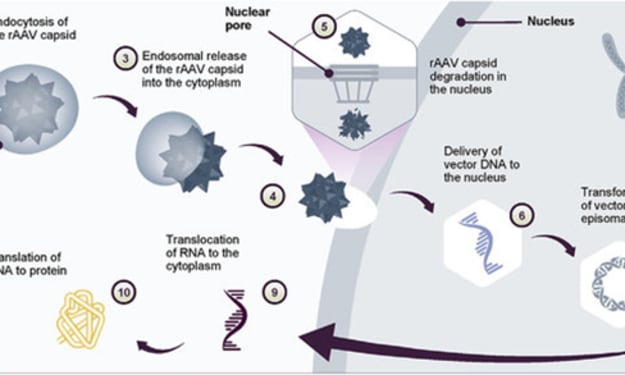Social Justice and Equality 12
Environmental Justice: Bridging the Gap between Social and Environmental Issues

Introduction
Environmental justice is an urgent global concern that seeks to address the unequal distribution of environmental burdens and benefits among different communities. This article explores the vital intersection of social and environmental issues, emphasizing the importance of environmental justice in creating a sustainable and equitable future. Drawing inspiration from real-life examples, we embark on a journey to bridge the gap between social and environmental challenges, advocate for marginalized communities, and inspire collective action for a more just and resilient planet.
Understanding Environmental Justice
Environmental justice is the fair treatment and meaningful involvement of all people, regardless of their race, ethnicity, or socioeconomic status, in environmental decision-making processes. It aims to rectify the disproportionate environmental burdens faced by marginalized communities and ensure their access to clean air, water, and a healthy environment. Understanding the principles and goals of environmental justice is essential for effecting meaningful change.
Example: The fight against the Dakota Access Pipeline by the Standing Rock Sioux Tribe highlighted the importance of environmental justice in protecting indigenous rights and preserving sacred lands.
Environmental Racism: Disparities in Exposure
Environmental racism refers to the disproportionate exposure of communities of color to environmental hazards and pollution. It reflects systemic discrimination that perpetuates environmental inequalities. Examining cases of environmental racism brings to light the urgent need for environmental justice and amplifies the voices of affected communities.
Example: The Flint water crisis in Michigan, where predominantly African American communities were exposed to lead-contaminated water, underscored the intersection of race, poverty, and environmental injustice.
Climate Justice: Bridging Social and Environmental Movements
Climate justice recognizes that the impacts of climate change disproportionately affect marginalized communities, particularly those already facing social and economic inequalities. It emphasizes the need to address both the causes and consequences of climate change in a just and equitable manner. Bridging social and environmental movements is crucial for creating comprehensive solutions to the climate crisis.
Example: The global youth-led movement sparked by Greta Thunberg highlights the intersection of social justice and environmental activism, advocating for urgent action to combat climate change.
Indigenous Rights and Environmental Stewardship
Indigenous communities have long been at the forefront of environmental stewardship and have valuable knowledge and practices for sustainable living. Respecting and upholding indigenous rights is essential for achieving environmental justice. By partnering with indigenous communities, we can learn from their wisdom and incorporate their perspectives in environmental decision-making.
Example: The legal battle led by the Ecuadorian indigenous community, the Waorani people, successfully protected their ancestral lands in the Amazon rainforest from oil drilling, safeguarding both their cultural heritage and the environment.
Environmental Injustice and Public Health
Environmental injustices have significant implications for public health. Marginalized communities often face higher rates of pollution-related illnesses and health disparities. Examining the relationship between environmental factors and public health underscores the urgency of addressing environmental injustices to promote overall well-being.
Example: The impact of air pollution on respiratory health in low-income communities highlights the intersection of environmental justice and public health disparities.
Grassroots Movements and Community Engagement
Grassroots movements and community engagement are powerful drivers of environmental justice. By empowering communities and amplifying their voices, we can effect meaningful change at the local level. Engaging with affected communities, organizing campaigns, and advocating for policy changes can foster environmental justice movements that lead to systemic transformation.
Example: The movement against the construction of the Keystone XL pipeline involved indigenous communities, environmental organizations, and concerned citizens joining forces to protect the environment and indigenous rights.
Environmental Education and Advocacy
Environmental education plays a vital role in promoting environmental justice. By fostering awareness, knowledge, and action, we can empower individuals to become advocates for the environment and champions of justice. Educating ourselves and others about the interconnections between social and environmental issues is key to driving sustainable change.
Example: Youth-led organizations, such as the Sunrise Movement, focus on environmental education and advocacy, mobilizing young people to demand climate action and justice.
Collaborative Solutions and Policy Changes
Collaborative solutions and policy changes are essential for achieving environmental justice. By partnering with diverse stakeholders, including communities, governments, nonprofits, and businesses, we can create comprehensive strategies that address the root causes of environmental injustices. Policy changes, regulations, and sustainable practices can promote fairness, equality, and environmental stewardship.
Example: The transition to renewable energy sources and the adoption of environmental justice policies in cities like Barcelona, Spain, demonstrate the potential for collaborative solutions to bridge the gap between social and environmental challenges.
Conclusion
Environmental justice is a critical movement that bridges the gap between social and environmental issues, striving for a future where all communities can thrive in a healthy and sustainable environment. By understanding environmental justice principles, addressing environmental racism, promoting climate justice, respecting indigenous rights, examining public health disparities, fostering grassroots movements, prioritizing environmental education and advocacy, and driving collaborative solutions and policy changes, we can create a world where social equity and environmental sustainability go hand in hand. Let us draw inspiration from real-life examples and work together to build a more just, resilient, and inclusive future for all.
About the Creator
Joshua Amoka Ajayi
Passionate soap maker, travel agent&writer on a mission to blend art and adventure. With a background in Mathematics and Statistics, I believe in God and the power of hard work. Let's explore, connect, and create beautiful memories together
Enjoyed the story? Support the Creator.
Subscribe for free to receive all their stories in your feed. You could also pledge your support or give them a one-off tip, letting them know you appreciate their work.





Comments
There are no comments for this story
Be the first to respond and start the conversation.